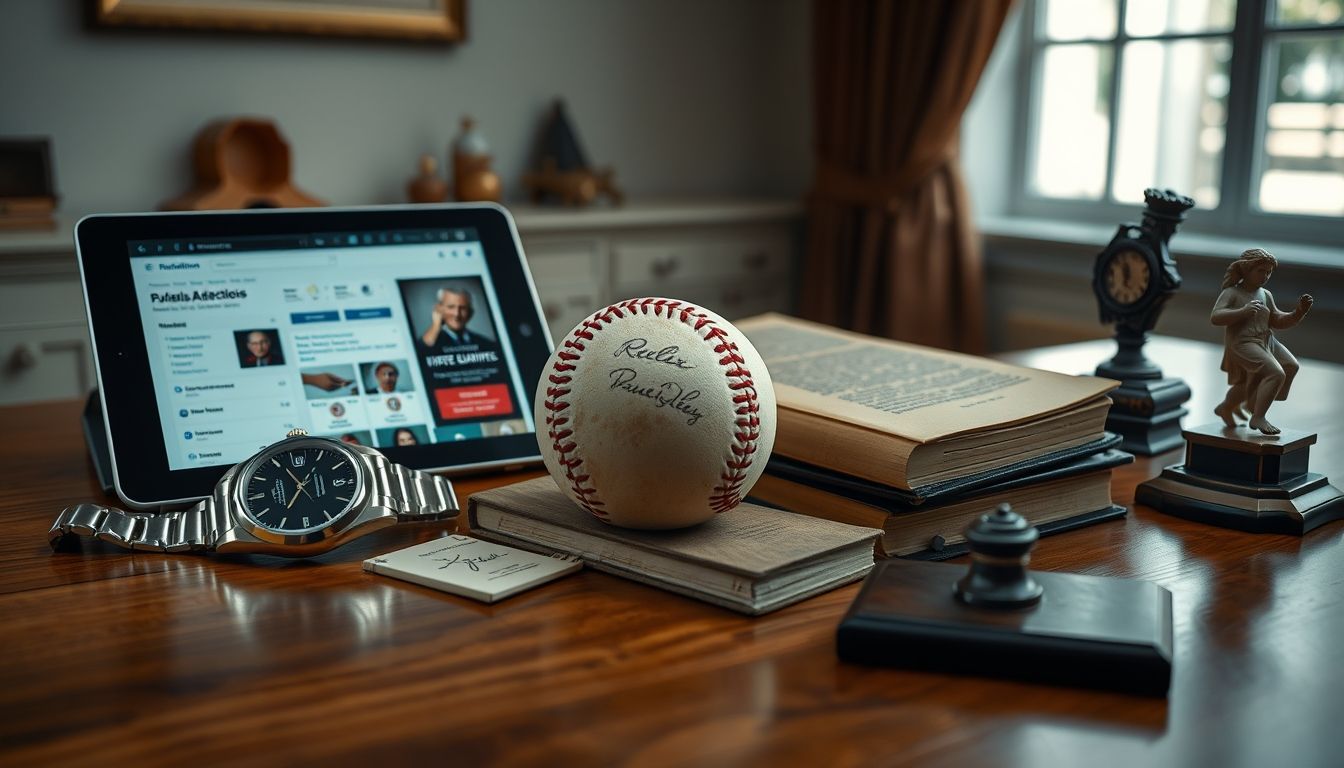Introduction: The Digital Age and Antiques
The world of collectibles and antiques is undergoing a radical transformation thanks to digital technology. Traditional auctions and specialized stores are no longer the only sources for acquiring these treasures. Innovative digital platforms have emerged, allowing enthusiasts to buy, sell, and exchange antiques easily, opening the door to a wider range of investors and collectors.
Chapter 1: Why Invest in Collectibles and Antiques?
Investing in collectibles and antiques is not just a hobby; it's an alternative investment that holds many advantages:
- Diversifying the Investment Portfolio: Adding collectibles to your portfolio reduces the risks associated with stocks and bonds.
- Preserving Value: Antiques often retain their value or increase over time, especially if they are rare or of historical significance.
- Personal Enjoyment: Investing in something you love gives you personal pleasure in addition to the potential financial return.
Example: The luxury watch market has seen a significant rise in recent years, with some rare models achieving investment returns exceeding real estate stocks.
Chapter 2: Digital Platforms: A New Window into the World of Antiques
Digital platforms allow investors and collectors to access a wide range of antiques and collectibles from around the world. These platforms include:
- Online Auctions: Such as eBay and LiveAuctioneers, which offer a diverse range of antiques and art pieces.
- Specialized Marketplaces: Such as Artsy and 1stDibs, which focus on fine arts and design.
- Social Platforms: Such as Instagram and Pinterest, which are used to display antiques and connect with sellers and buyers.
Statistic: Online art sales increased by 12% in 2023, reaching $68.2 billion (Source: Statista).
Chapter 3: Popular Types of Collectibles and Antiques
The collectibles and antiques that can be invested in are diverse, including:
- Fine Arts: Paintings, sculptures, and prints.
- Archaeological Artifacts: Ancient coins, jewelry, and artifacts.
- Luxury Watches: Rolex, Patek Philippe, and Audemars Piguet watches.
- Classic Cars: Vintage Ferrari, Porsche, and Mercedes-Benz cars.
- Sports Memorabilia: Signed memorabilia and original sports apparel.
- Rare Books and Manuscripts: First editions of important books and historical manuscripts.
Tip: Before investing, conduct thorough research on the market, prices, and trends for each type of collectible.
Chapter 4: Appraising Antiques: How to Determine the Real Value?
Appraising antiques requires specialized knowledge and expertise. Factors that affect the value of an antique include:
- Rarity: The rarer the antique, the higher its value.
- Authenticity: Ensure that the antique is original and not a counterfeit.
- Condition: The better the condition of the antique, the higher its value.
- Historical Significance: Antiques that carry historical or cultural significance are more valuable.
- Demand: The value of an antique is affected by market demand.
Example: Certified appraisers can be used to accurately estimate the value of antiques.
Chapter 5: Risks and Challenges in Investing in Antiques
Investing in antiques involves some risks and challenges, including:
- Market Fluctuations: Antique prices can change significantly based on supply and demand.
- Counterfeiting and Fraud: There is a risk of buying counterfeit or fake antiques.
- Storage and Insurance Costs: A safe place to store antiques and insure them against theft and damage must be provided.
- Difficulty Selling: It may be difficult to sell antiques quickly and at a reasonable price.
Tip: Conduct a thorough inspection of the antique before buying and only invest in antiques that you understand well.
Chapter 6: Successful Antique Investment Strategies
To achieve success in investing in antiques, follow these strategies:
- Define Your Interests: Invest in antiques that you love and understand.
- Research and Learn: Conduct thorough research on the market, prices, and trends.
- Consult Experts: Seek advice from trusted appraisers and dealers.
- Diversify Your Portfolio: Do not invest all your money in one type of antique.
- Be Patient: Investing in antiques takes time and effort.
Example: Building strong relationships with dealers and experts can help you get good deals.
Chapter 7: Taxes and Legal Considerations
When investing in antiques, the following taxes and legal considerations should be taken into account:
- Capital Gains Tax: Profits from the sale of antiques are subject to capital gains tax.
- Inheritance Tax: Antiques may be subject to inheritance tax when passed on to heirs.
- Antiquities Protection Laws: Antiquities protection laws must be followed when buying and selling archaeological artifacts.
Tip: Consult a tax and legal advisor to understand the tax and legal obligations related to investing in antiques.
Chapter 8: The Future of Investing in Digital Antiques
Investing in digital antiques is growing, driven by new technologies such as:
- Non-Fungible Tokens (NFTs): Used to represent ownership of digital antiques.
- Augmented Reality (AR): Allows digital antiques to be displayed in the real world.
- Blockchain: Used to secure and track the ownership of digital antiques.
Statistic: Sales of NFTs related to art and collectibles reached $22 billion in 2021 (Source: NonFungible.com).
Chapter 9: Success Stories in the World of Digital Collectibles
There are many inspiring success stories in the world of digital collectibles, where investors have achieved significant returns by:
- Buying and Selling Art NFTs: Some art NFTs have sold for millions of dollars.
- Investing in Digital Antique Platforms: Some of these platforms have seen tremendous growth in value.
- Creating Private NFT Collections: Some artists and celebrities have created their own NFT collections and achieved great success.
Chapter 10: Practical Tips for New Investors
If you are considering investing in collectibles and antiques through digital platforms, here are some practical tips:
- Start with a Small Amount: Do not invest all your money at the beginning.
- Focus on a Specific Area: Choose one area of collectibles and delve into it.
- Use Trusted Platforms: Choose digital platforms with a good reputation.
- Verify the Authenticity of Antiques: Make sure the antiques are original and not fake.
- Be Careful of Scams: Do not trust offers that seem too good to be true.
Conclusion: Investing in collectibles and antiques through digital platforms can be profitable and enjoyable, but it requires careful planning and thorough research. With patience and knowledge, you can turn your hobby into a valuable digital asset.




